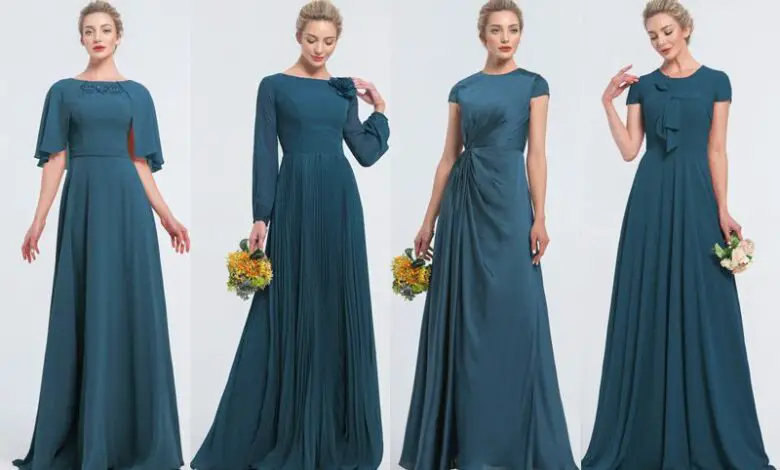
Weddings are universally recognized as joyous celebrations of love and commitment. However, nestled within the splendor of these events lies a complex web of financial considerations. Every couple dreams of a perfect wedding, and while love may be priceless, the reality is that weddings come with a substantial price tag. Among the myriad expenses that couples must navigate, the cost of bridesmaids’ dresses often emerges as a pivotal point of discussion.
Wedding planning, despite its romantic essence, can quickly evolve into a logistical labyrinth. From venue reservations to catering arrangements, floral decor to entertainment choices, every detail demands careful financial planning. In the midst of these complexities, bridesmaids’ dresses stand as one more piece in the puzzle, often with their own set of questions and quandaries.
Part 1: Traditional Etiquette
The Tradition of the Bride Footing the Bill
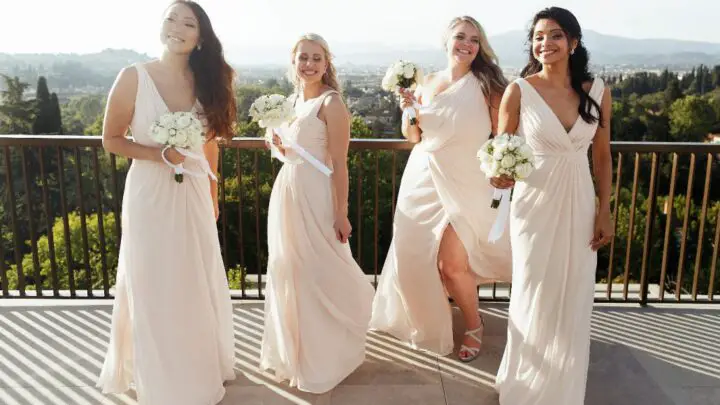
Traditionally, one of the most deeply ingrained expectations in wedding etiquette has been that the bride covers the cost of her bridesmaids’ dresses. This practice, rooted in long standing customs, reflects the bride’s role as the central figure in the wedding.
Historical Origins: A Glimpse into the Past
To understand this tradition, we must step back in time. Historically, bridesmaids played a crucial role in warding off evil spirits. Dressed in attire similar to the bride’s, they served as decoys, confusing any malevolent forces that might wish to harm the bride on her special day. In return for this significant duty, the bride would graciously cover the cost of their dresses. While the supernatural element has faded, the sentiment remains—a bride demonstrates her gratitude by ensuring her bridesmaids look and feel their best.
Bridesmaids’ Broader Role in Wedding Expenses
The responsibility of the bride for the bridesmaids’ dresses is often part of a larger arrangement. Traditionally, bridesmaids also share the financial burden of other wedding-related expenses, such as bridal showers, bachelorette parties, and sometimes even accommodation and travel costs. In this context, the bride’s gesture of purchasing their dresses can be seen as a reciprocal gesture of appreciation for the bridesmaids’ contributions to these pre-wedding events.
Bridesmaids Dresses Costs Across the Globe
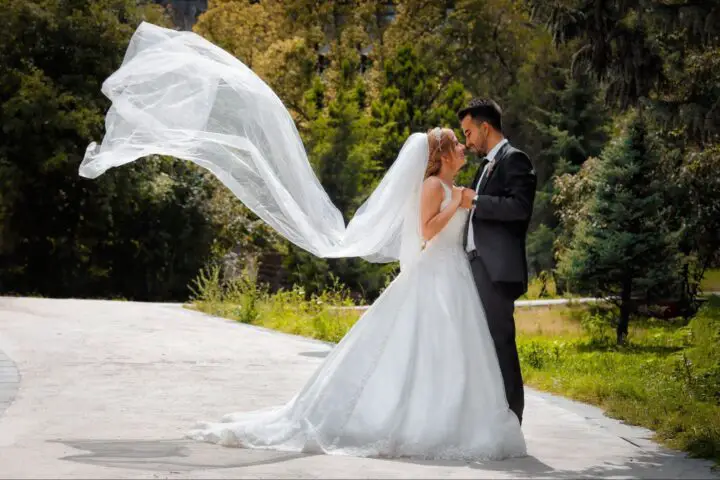
It’s important to note that the cost of bridesmaids’ dresses can vary significantly depending on the region. In Australia, for instance, it’s customary for the bride to cover the cost of the dresses. This aligns with the traditional etiquette we discussed earlier. Meanwhile, in the United Kingdom, it’s also common for the bride to pay for the bridesmaids’ attire. However, in the United States, customs can vary widely. Here, it’s not unusual for bridesmaids to purchase their own dresses, especially if the dresses can be worn again for different occasions.
Part 2: Modern Perspectives
Evolving Financial Responsibilities in Modern Weddings
In recent years, the landscape of weddings has undergone a transformation, and with it, the traditional expectations of who foots the bill for bridesmaids’ dresses have evolved. Today, many couples approach their wedding planning with a more egalitarian mindset.
The Trend of Bridesmaids Shouldering Their Dress Expenses
As brides and grooms often start their married lives with financial responsibilities like student loans or housing costs, expecting bridesmaids to purchase their own attire can be seen as a practical and considerate approach.
Scenarios Where the Bride May Still Choose to Pay
While modern trends lean towards bridesmaids covering their dress expenses, there are still scenarios where the bride may opt to pay for the dresses. These decisions can be influenced by various factors:
- Financial Considerations: If the bride and groom have the means to cover the cost without imposing financial strain, they may choose to do so as a gesture of generosity and appreciation.
- Custom and Tradition: In some families or cultural backgrounds, it’s still considered customary for the bride to cover the bridesmaids’ attire. This can be a way of respecting and preserving tradition.
- Bridal Party Circumstances: The bride may be aware of her bridesmaids’ financial situations and choose to take on the expense to alleviate any financial burden on her closest friends or family members.
- Special Gifts: As a token of gratitude for their support, some brides choose to purchase the dresses as a gift for their bridesmaids, even if modern etiquette suggests otherwise.
In essence, while the trend leans towards a more modern approach where bridesmaids often purchase their own dresses, the bride’s decision to cover this expense or not is a personal one, influenced by a multitude of factors that reflect her values, finances, and the dynamics of her bridal party.
Part 3: Splitting Costs
The Concept of Cost-Sharing Between Bridesmaids and the Bride
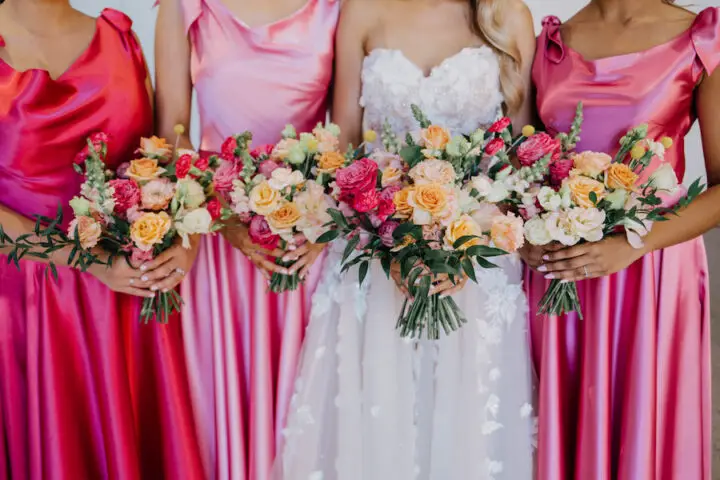
As modern wedding customs continue to evolve, a popular middle-ground solution has emerged: cost-sharing between bridesmaids and the bride. This approach acknowledges the financial realities of the bridal party while upholding the sentimental value of the bride contributing to the attire.
Different Approaches to Dividing Expenses
- Equal Contributions: One straightforward approach is to divide the cost equally among all parties involved. This ensures that each bridesmaid carries an equal financial burden, promoting fairness and transparency. The bride may choose to contribute her share or slightly more, symbolizing her appreciation for her bridesmaids.
- Percentage-Based Split: In this approach, the bride might agree to cover a certain percentage of the dress cost, while each bridesmaid pays the remaining portion. For example, the bride could cover 50% of the expense, with the bridesmaids collectively covering the other half.
- Fixed Amount or Subsidy: The bride might offer a fixed amount as a subsidy towards each bridesmaid’s dress. This subsidy can help ease the financial burden on the bridesmaids without obliging the bride to cover the entire cost. Bridesmaids then pay the difference between the subsidy and the total dress price.
- Bride Covers Accessories: While the bridesmaids pay for their dresses, the bride may choose to cover the cost of accessories, such as shoes, jewelry, or hair and makeup styling, ensuring a cohesive and polished look for the bridal party.
Tips on Effective Communication About Cost-Sharing
Open and honest communication is key when discussing cost-sharing for bridesmaids’ dresses. Here are some tips for successful discussions:
- Start Early: Initiate the conversation about expenses as early as possible during wedding planning to avoid misunderstandings or surprises down the road.
- Be Sensitive: Recognize that financial situations vary among bridesmaids. Be empathetic and considerate of their individual circumstances.
- Set Clear Expectations: Clearly outline who is responsible for what expenses. Ensure everyone understands their financial obligations.
- Consider Flexibility: Be open to flexibility if a bridesmaid is facing unexpected financial challenges. Discuss alternative solutions or timelines for payment.
- Offer Options: If there are choices in dress styles or price ranges, provide options that allow bridesmaids to select something within their budget.
- Express Gratitude: Regardless of the financial arrangement, express your gratitude to your bridesmaids for their support.
Part 4: Special Circumstances

Bridesmaids Facing Financial Constraints
It’s not uncommon for bridesmaids to encounter financial constraints that make the traditional approach to purchasing dresses challenging. Life is full of unexpected expenses, and understanding and empathy are vital when navigating these situations within the context of a wedding.
Advice for Handling Unique Financial Scenarios
- Private Conversations: Have private conversations with bridesmaids who may be facing financial difficulties.
- Flexible Timelines: Be open to flexible timelines for dress purchases. Giving bridesmaids more time to save or shop for deals can alleviate stress and financial strain.
- Partial Contributions: If your bridesmaids are particularly close friends or family members and you can afford to do so, consider making partial contributions toward their dress expenses. This gesture can ease their financial burden and demonstrate your understanding.
Saving Solutions for Budget-Limited Bridesmaids
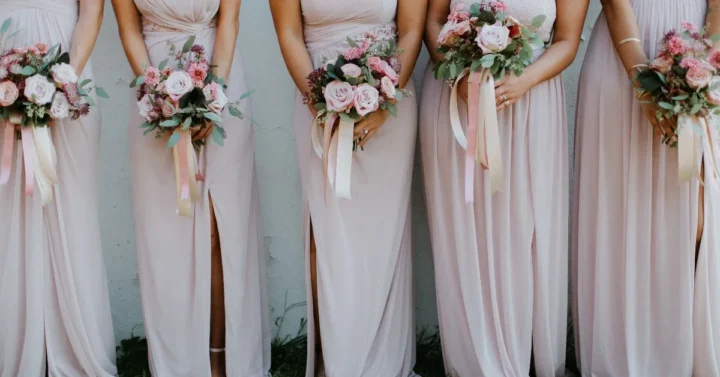
eDresstore.com as a Digitally Native Vertical Brand (DNVB), specializes in affordable bridesmaid dresses and can be an excellent resource for bridesmaids with budget concerns. From $79 to $99, you can have an artfully designed dress in any color you want.
While wedding dreams are built on love and commitment, they should also be built on fairness and respect for the financial realities of all involved. Whether it’s through cost-sharing, alternative dress options, or timely communication, finding solutions that ensure every member of the bridal party can participate comfortably is paramount.
In the end, a successful wedding celebration isn’t measured solely by its grandeur but by the joy and unity it brings.
